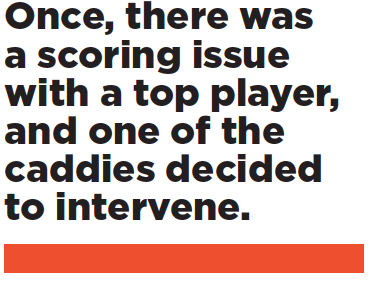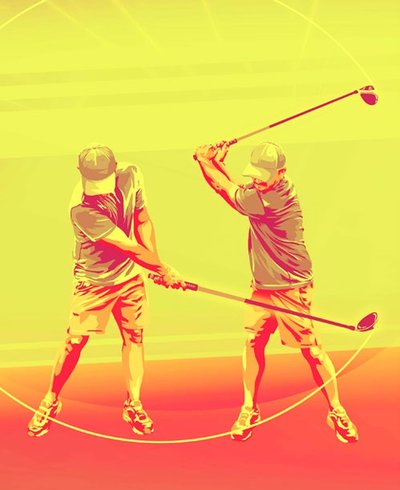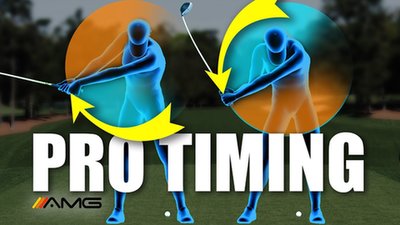Undercover Caddie
When we get too involved, things get messy
JOE LACAVA WAS in the wrong for his celebration at the Ryder Cup but for the right reasons. I remember fellow caddie Mitchell Knox once telling me, “If they’re talking about you, you’ve messed up.” That applies to LaCava’s zealous lingering on Saturday at Marco Simone after Patrick Cantlay dropped that ridiculous putt.
LaCava was essentially right in the line – and in the face – of Rory McIlroy before he attempted his final putt of the match. You’ve seen the video and likely the one of a frustrated McIlroy in the car park later that night. What the television networks failed to show is how long LaCava’s peacocking truly lasted – around 90 seconds – and how close he got to McIlroy. Keep in mind that all the distractions McIlroy has dealt with during the past two years while remaining graceful. You must act egregiously to cause McIlroy to snap like he did.
It sounds like LaCava apologised and all is good between the two. The thing is, I feel like LaCava got a raw deal because he wasn’t the provocateur that he has been made out to be. I wasn’t in Italy for the Ryder Cup, but I’ve talked to players and caddies that were, and I’ve been in a few myself. Ryder Cups are as emotionally charged as this sport gets, and everyone on the grounds feels that electricity. Hell, I once saw a European rules official give a fist pump after Ross Fisher holed a putt. That type of provinciality gives the proceedings an edge, which I love. That edge also puts people on edge, and sometimes a line is crossed.
On that Saturday in Rome, it wasn’t just the crowd’s behaviour towards Cantlay that was getting cruel. Shane Lowry – who is a damn good bloke – got way too carried away in the afternoon session as a spectator. It’s not just the cheering or chest-pounding; Lowry was practically prancing down the 18th hole like he was auditioning for the Nutcracker at his local community theatre. That’s his right, and you could argue that type of emotion is why Europe continues to kick America’s ass in this competition. The flip side is that if you’re going to act like that, you can’t be upset if your opponent tells you to shove it.

Cantlay doesn’t emote and has no appetite to engage in controversy. LaCava, though, clearly thought Lowry and the European crowds did his player wrong. LaCava’s celebration was over the top, but he wasn’t being a poor sport in victory. He was just trying to stand up for his guy. Every player wants that support from their caddie. Almost every caddie I know acknowledges LaCava went too far, but we’re all proud of him for standing up for what he thought was right. After all, this wasn’t the first time a caddie overstepped his station.
Once, there was a scoring issue with a top player, which was pointed out by his playing partner in the tent after the round. It was an honest mistake that happens all the time. Both players, seated at the scoring table, started to go through the round, hole by hole, making sure everything added up. One of the caddies – and this is a caddie every casual golf fan knows by name – decided to intervene, hovering over his player and pointing to one of the holes in question. The other player turned his head towards the caddie and calmly but sternly said, “Excuse me, the players are taking care of this.” If that sounds prickish, I won’t debate you, except the player who said it is one of the nicest guys in the game, and the caddie, well, not so much. Even the nice guys have no patience for caddies who step over the line.
Another time, I saw a caddie – also a big name in our line – working with his player and the player’s coach late at night on the green. This player had been struggling for months with the putter, and it was midway through a major. Though the player was in contention, he could have been leading if a few putts had dropped. I was off to the side, chatting with a friend but keeping an eye on what was happening on the green. This caddie holds himself in high regard and envisions himself as a teacher. After the player missed several putts from 10 feet, the caddie mentioned something about the player’s left foot being slightly open. Both the teacher and player shot him a similar look. That look . . . well, have you ever been moving furniture, and the furniture is stuck on a corner, and an onlooker suggests, “Hey, maybe try turning it?” Yeah, that’s how the caddie’s advice was taken.
My favourite caddie-not-knowing- his-station story comes from the Korn Ferry Tour. A player had a high finish, one that essentially locked up his PGA Tour card. This happened to be at a site where the caddie went to college, so the local newspaper worked that angle hard. The caddie was not used to getting media attention and went overboard in describing his role in the player’s performance. The article that came out made it sound like the caddie was the reason the player earned his card.
Players and caddies are a team, and we can play a big part in the success of our player. We let the players say that, not us. At the next event, the caddie got to the tournament site, and the player had arranged for several players and caddies to hold pencils as microphones and, taping with their cellphones follow the caddie from the car park to the range to “interview” him. The caddie found it funny – I think – but the message was sent.
What do all these stories tell us? As a caddie, you’re right only if the player thinks you’re right. If you think that’s wrong, you’re in the wrong profession.
– WITH JOEL BEALL


WHAT TECHNOLOGY HAS TAUGHT ME
LOW AND SLOW IS NOT THE WAY TO GO
BY SHAUN WEBB
I like to say “success leaves clues.” Using the Gears motion-tracking system and studying what the best players do, we’ve found a commonality in most pros’ backswings that might seem contradictory to what you’ve been told to do, but it’s key to sequencing, timing, and power generation. High-level players start their swings with a lot of speed early off the ball and then slow down as the club approaches the top. Amateurs, often under the direction of taking the club back “low and slow,” do the opposite. Their takeaway is too deliberate and their transition is too quick. The result is they often lose control of the swing during the change-of-direction phase. To make your backswing more effective, try this drill: Grab your driver and mimic a follow-through position where the club already has passed impact and your trail foot’s heel is off the ground. This is the new start position for your backswing (above left). Replant your heel and take the club back quicker than you’re used to but let the speed die as the club approaches the top (above right). Work on this move for a bit and when it feels comfortable, expand to making throughswings to complete the task. I think you’ll find this puts newfound energy and flow into your swing and syncs everything up. – WITH RON KASPRISKE
SHAUN WEBB, one of Golf Digest’s 50 Best Teachers in America, is at Athletic Motion Golf in Winter Garden, Florida.


